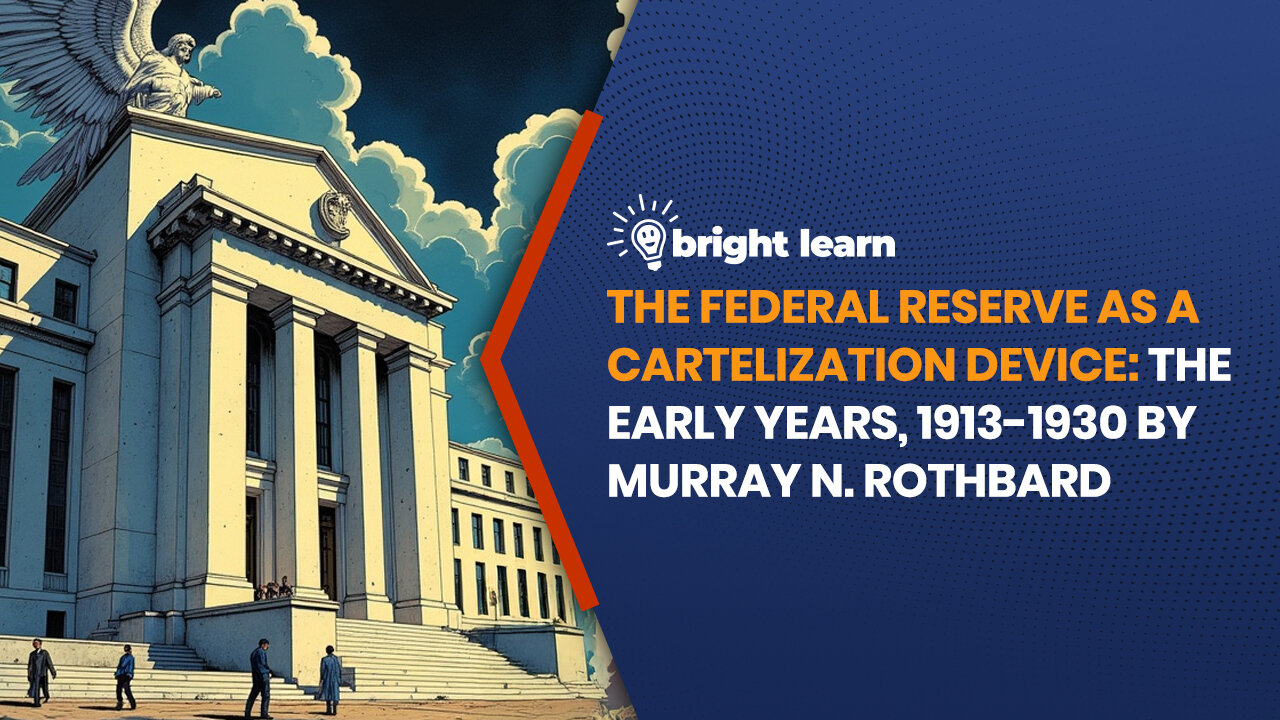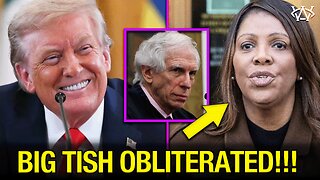Premium Only Content

BrightLearn - The Federal Reserve as a Cartelization Device by Murray N. Rothbard
Murray N. Rothbard, in his chapter The Federal Reserve as a Cartelization Device: The Early Years, 1913-1930 from Money in Crisis (1984), challenges the conventional view of the Federal Reserve as a stabilizing institution, arguing instead that it was designed as a cartelization tool for powerful banks. Contrary to the narrative that the Fed was necessary to curb inflation and economic instability, Rothbard asserts that it enabled inflationary policies by consolidating banking control under elite interests. The system emerged from efforts by big banks—led by figures like J.P. Morgan and Paul Warburg—to circumvent competitive constraints after the National Banking Acts centralized monetary power. The secretive Jekyll Island meeting (1910) and the subsequent Federal Reserve Act (1913) institutionalized this cartel, allowing banks to inflate credit through centralized reserves and lender-of-last-resort mechanisms. Under Benjamin Strong’s leadership, the Fed exacerbated monetary expansion, propped up international banking cartels, and contributed to economic distortions, ultimately deepening crises like the Great Depression rather than preventing them. Rothbard concludes that the Fed was never meant to stabilize the economy but rather to serve the interests of a financial elite.
For more videos, visit BrightLearn.ai
Find a copy of this amazing book here: https://www.amazon.com/Money-Crisis-Federal-Reserve-Monetary/dp/0884109631
-
 6:13
6:13
Bright Learn
1 month agoBrightLearn - Hope Amidst Collapse: Insights from Mike Adams, an interview with Seth Holehouse
721 -
 3:15:07
3:15:07
TheItalianCEO
4 hours agoLast Stream before I go - Playing The Finals
9.92K -
 1:14:43
1:14:43
JustPearlyThings
4 hours agoPearl Reacts: 20 Black Conservatives DESTROY Radical Feminist Activist | Pearl Daily
31.6K14 -
 LIVE
LIVE
This is the Ray Gaming
2 hours ago $0.04 earnedThursRAY Night LIVE with the BOYS! | Rumble Premium Creator
33 watching -
 LIVE
LIVE
The UC Zone
5 hours ago🔴LIVE - THE UC ZONE - NEW UPDATE TO OFF THE GRID?!?
9 watching -
 2:09:22
2:09:22
Robert Gouveia
7 hours agoTrump WINS Appeal! 🚨 Letitia James BLOWN OUT! Biden Scandal BOMBSHELL!
34.1K22 -
 3:15:52
3:15:52
Barry Cunningham
6 hours agoBREAKING NEWS: PRESIDENT TRUMP ON PATROL IN WASHINGTON D.C.
59K27 -
 13:09:35
13:09:35
LFA TV
17 hours agoLFA TV ALL DAY STREAM - THURSDAY 8/21/25
153K26 -
![[your]NEWS - Become a PAID Journalist - With Sam Anthony](https://1a-1791.com/video/fww1/68/s8/1/i/4/a/b/i4abz.0kob-small-yourNEWS-Become-a-PAID-Jour.jpg) 1:10:00
1:10:00
Kat Espinda
19 hours ago[your]NEWS - Become a PAID Journalist - With Sam Anthony
14.4K1 -
 1:56:01
1:56:01
megimu32
5 hours agoOTS: Pimp My Ride LOL - Insane Mods & Car Stereo Nostalgia
18.6K5